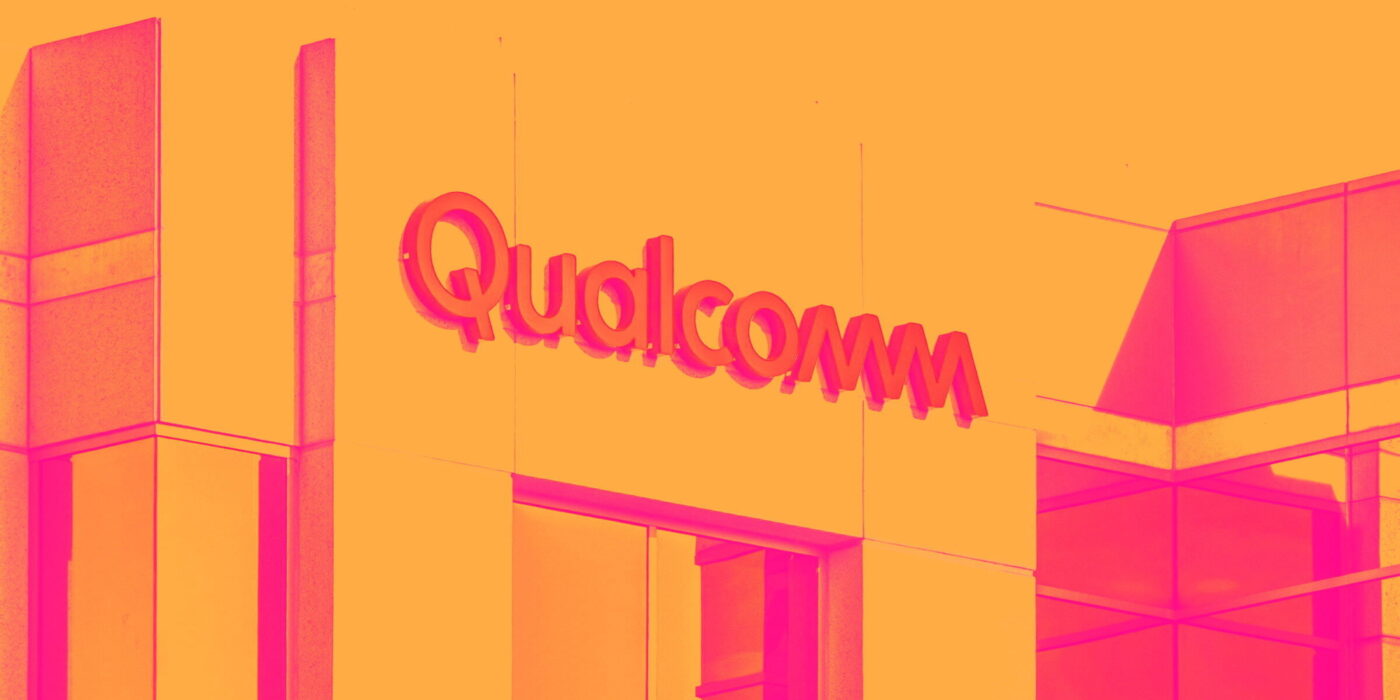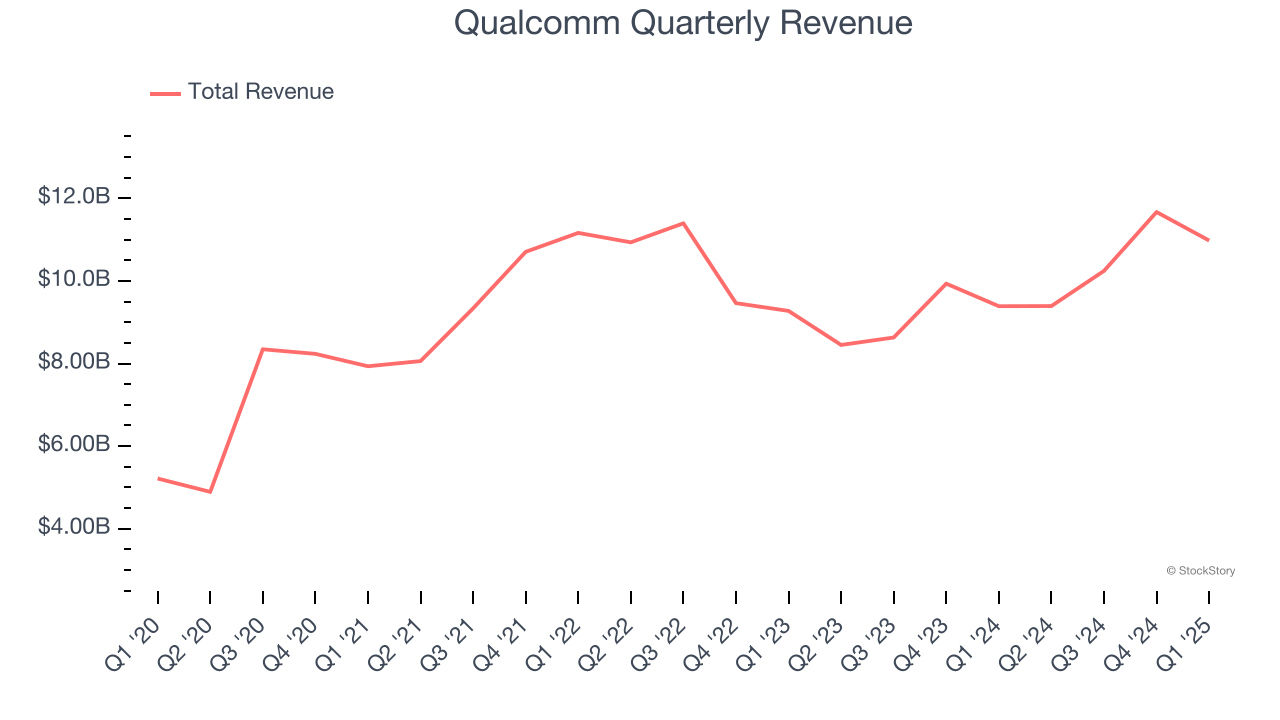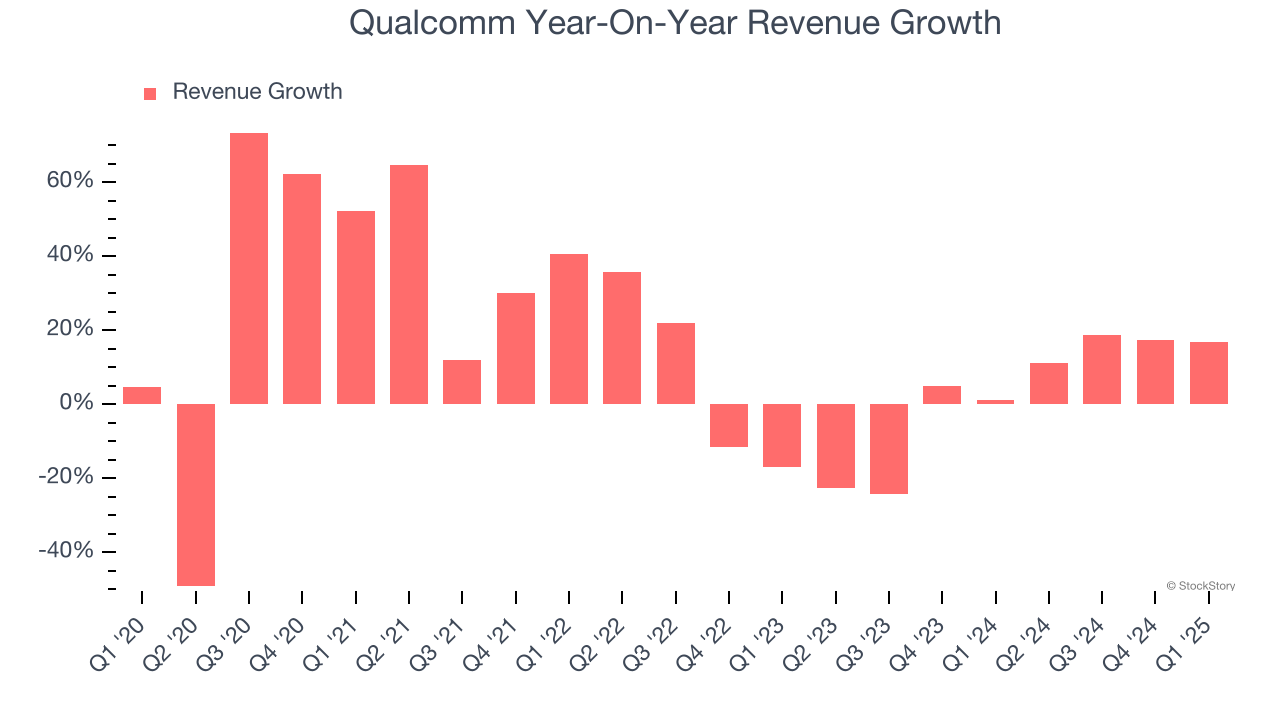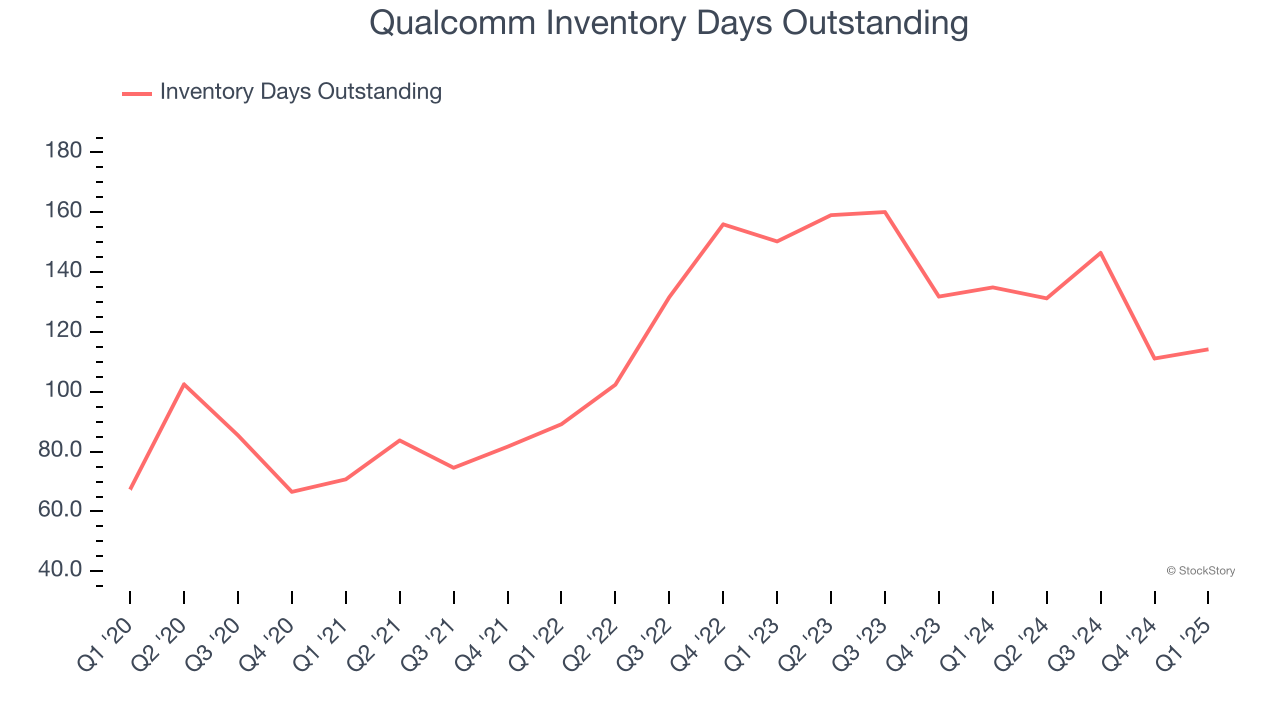
Wireless chipmaker Qualcomm (NASDAQ: QCOM) announced better-than-expected revenue in Q1 CY2025, with sales up 16.9% year on year to $10.98 billion. The company expects next quarter’s revenue to be around $10.3 billion, close to analysts’ estimates. Its non-GAAP profit of $2.85 per share was 1.2% above analysts’ consensus estimates.
Is now the time to buy Qualcomm? Find out by accessing our full research report, it’s free.
Qualcomm (QCOM) Q1 CY2025 Highlights:
- Revenue: $10.98 billion vs analyst estimates of $10.65 billion (16.9% year-on-year growth, 3.1% beat)
- Adjusted EPS: $2.85 vs analyst estimates of $2.82 (1.2% beat)
- Adjusted Operating Income: $3.69 billion vs analyst estimates of $3.65 billion (33.6% margin, 1.1% beat)
- Revenue Guidance for Q2 CY2025 is $10.3 billion at the midpoint, slightly below what analysts were expecting
- Adjusted EPS guidance for Q2 CY2025 is $2.70 at the midpoint, roughly in line with what analysts were expecting
- Operating Margin: 28.4%, up from 24.9% in the same quarter last year
- Free Cash Flow Margin: 21.3%, down from 35.9% in the same quarter last year
- Inventory Days Outstanding: 114, up from 111 in the previous quarter
- Market Capitalization: $161.3 billion
Company Overview
Having been at the forefront of developing the standards for cellular connectivity for over four decades, Qualcomm (NASDAQ: QCOM) is a leading innovator and a fabless manufacturer of wireless technology chips used in smartphones, autos and internet of things appliances.
Sales Growth
A company’s long-term sales performance can indicate its overall quality. Any business can put up a good quarter or two, but many enduring ones grow for years. Luckily, Qualcomm’s sales grew at a solid 11.3% compounded annual growth rate over the last five years. Its growth beat the average semiconductor company and shows its offerings resonate with customers, a helpful starting point for our analysis. Semiconductors are a cyclical industry, and long-term investors should be prepared for periods of high growth followed by periods of revenue contractions.

Long-term growth is the most important, but short-term results matter for semiconductors because the rapid pace of technological innovation (Moore's Law) could make yesterday's hit product obsolete today. Qualcomm’s recent performance shows its demand has slowed as its annualized revenue growth of 1.5% over the last two years was below its five-year trend. 
This quarter, Qualcomm reported year-on-year revenue growth of 16.9%, and its $10.98 billion of revenue exceeded Wall Street’s estimates by 3.1%. Beyond the beat, this marks 6 straight quarters of growth, showing that the current upcycle has had a good run - a typical upcycle usually lasts 8-10 quarters. Company management is currently guiding for a 9.7% year-on-year increase in sales next quarter.
Looking further ahead, sell-side analysts expect revenue to grow 3.5% over the next 12 months. Although this projection suggests its newer products and services will spur better top-line performance, it is still below the sector average. At least the company is tracking well in other measures of financial health.
Today’s young investors won’t have read the timeless lessons in Gorilla Game: Picking Winners In High Technology because it was written more than 20 years ago when Microsoft and Apple were first establishing their supremacy. But if we apply the same principles, then enterprise software stocks leveraging their own generative AI capabilities may well be the Gorillas of the future. So, in that spirit, we are excited to present our Special Free Report on a profitable, fast-growing enterprise software stock that is already riding the automation wave and looking to catch the generative AI next.
Product Demand & Outstanding Inventory
Days Inventory Outstanding (DIO) is an important metric for chipmakers, as it reflects a business’ capital intensity and the cyclical nature of semiconductor supply and demand. In a tight supply environment, inventories tend to be stable, allowing chipmakers to exert pricing power. Steadily increasing DIO can be a warning sign that demand is weak, and if inventories continue to rise, the company may have to downsize production.
This quarter, Qualcomm’s DIO came in at 114, which is in line with its five-year average. These numbers show that despite the recent increase, there’s no indication of an unusual inventory buildup.

Key Takeaways from Qualcomm’s Q1 Results
It was encouraging to see Qualcomm beat analysts’ revenue expectations this quarter. We were also happy its EPS narrowly outperformed Wall Street’s estimates. On the other hand, its inventory levels increased and Q2 revenue guidance slightly missed, with the company implying that much is out of their control. Overall, this quarter was mixed. The stock traded down 5.3% to $140.29 immediately following the results.
Is Qualcomm an attractive investment opportunity at the current price? We think that the latest quarter is only one piece of the longer-term business quality puzzle. Quality, when combined with valuation, can help determine if the stock is a buy. We cover that in our actionable full research report which you can read here, it’s free.

